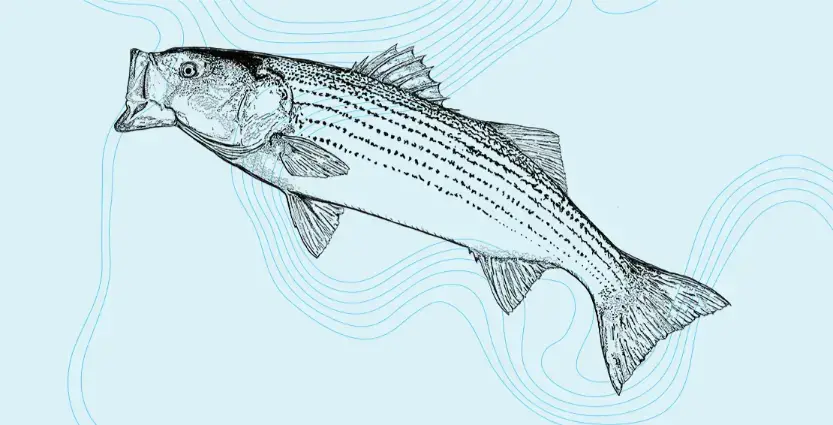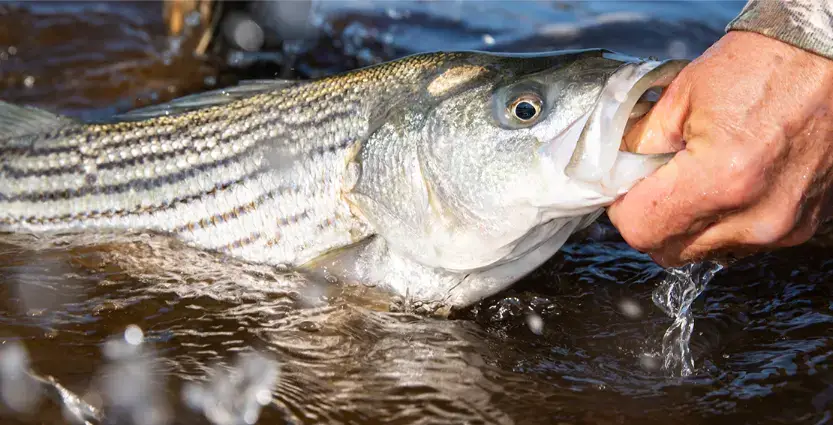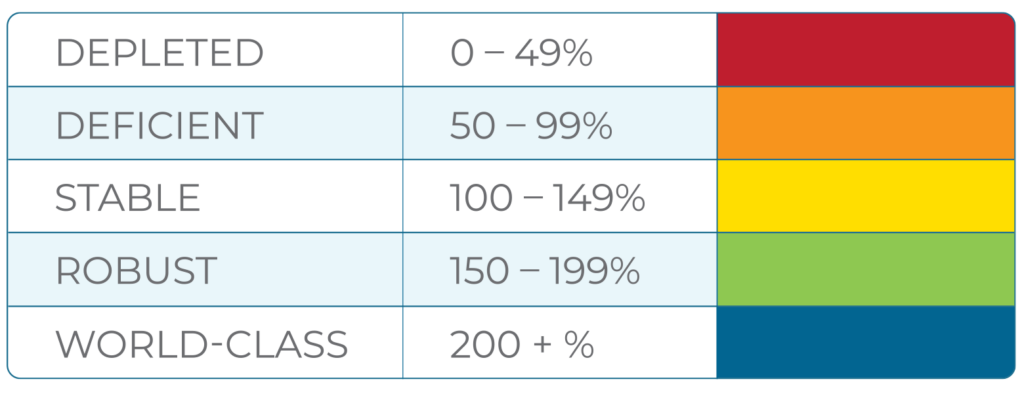Striped Bass Stock Statusin the Atlantic Ocean



Status Overview
Striped bass along North Carolina’s Atlantic coast are part of the migratory Atlantic stock, known for their seasonal movements and importance to both recreational and commercial fisheries, while facing management challenges tied to population fluctuations and coastal harvest pressures. For Striped Bass in the Atlantic Ocean Migratory Stock, the FINDEX gap assessment compared Target and Terminal values of Fishing Mortality (F) and Spawning Stock Biomass (SSB) from the stock assessment developed by the Atlantic States Marine Fisheries Commission. The Terminal year (the most recent data year) in the stock assessment model was 2021. States from Maine to North Carolina provide yearly data for this assessment.
How It’s Calculated
FINDEX is a novel way to gauge whether the status of a fish population is trending up or down. Management of most fish species in North Carolina is guided by stock assessment models developed by various groups of scientists. The calculations in our FINDEX metric measure the gap between the desired condition of a fish stock (the Target reference value) and the existing condition (the most recent data year in the model called the Terminal value) as determined in each stock assessment. The gaps between Target and Terminal values are reported as ratios.

(1.25 x 0.61) x 100 = 75.83%
FINDEX = 75.83% for 2021

What Does Deficient Mean?
A FINDEX designation of “Deficient” is assigned to any stock with a value between 50 and 99%. The most recent peer-reviewed stock assessment model for Atlantic Ocean Striped Bass (2021 data) tells a mixed story. Fishing mortality performed well relative to the target reference point, indicating overfishing was not occurring. On the other hand, Spawning Stock Biomass remained well below the target, indicating the stock was overfished. Stock status suggesting “overfishing” is not occurring while at the same time indicating that the stock is “overfished” is difficult to interpret. Our FINDEX metric remedies this confusion by classifying the Atlantic Ocean Striped Bass stock as “Deficient.”
Status Over Time
The stock assessment model for Atlantic Ocean Striped Bass provides point estimates of Fishing Mortality and Spawning Stock Biomass for each year covered in the data set. We’ve compared the Target reference values to these annual point estimates and calculated the ratios (gaps) for each data year from 1982–2021. Applying the FINDEX gap assessment to the entire time series provides the following stock status trendline:
How Do We Get To World-Class?
Atlantic Ocean Striped Bass Target values for Fishing Mortality (0.17) and Spawning Stock Biomass (106,820 metric tons) have been established by the management agencies. The existing estimates (2021 values) are 0.136 and 64,805 metric tons. Under one potential scenario, if Fishing Mortality remained at the 2021 estimate and Spawning Stock Biomass was to increase to 171,000 metric tons, then the FINDEX value would exceed 200% on our barometer.
Harvest Quotas For Atlantic Ocean Striped Bass
The commercial Striped Bass fishery in the Atlantic Ocean (0-3 miles offshore) is managed under two separate quota allocations. The first includes all states from Maine through North Carolina (except Pennsylvania) for harvest in the ocean. The second quota is specific to harvest of Striped Bass in the Chesapeake Bay. The annual commercial fishery in the Atlantic Ocean off North Carolina is non-existent most years due to the limited southern migration of Striped Bass into North Carolina offshore waters. For example, although the available commercial quota for North Carolina is over 295,000 pounds, no commercial harvest was reported in the most recent landings data (2022). Visit these sites for detailed regulations and to understand circle hook requirements.Striped Bass
Did You Know?
- Atlantic Ocean Striped bass are “anadromous”, meaning they spend most of the year in the ocean, but migrate inshore to their natal river to spawn each spring.
- Major spawning runs that support the Atlantic Ocean Striped Bass population include the rivers off the Chesapeake Bay, the Hudson River, and the Delaware River.
- North Carolina’s contribution to the Atlantic Ocean Striped Bass population is currently low. When the Roanoke River spawning population is robust, larger and older Striped Bass tagged on the Roanoke River spawning grounds are often recaptured off the coast of Massachusetts and New York.
State Record
- North Carolina’s coastal state record Striped Bass was landed off Oregon Inlet in 2011 by Keith Angel.
- The record-breaking fish weighed 64 pounds.
World Record
- Long Island Sound boasts the location of the world record Striped Bass, an 81-pound, 14-ounce monster caught by Gregory Myerson on August 4, 2011. Myerson was drift fishing with a live eel.
Stay Current
As our team diligently refines FINDEX, we’re committed to delivering the most recent stock status updates for North Carolina’s diverse finfish species. Subscribe below to receive a stream of inshore insights and stay current with our coastal initiatives.
